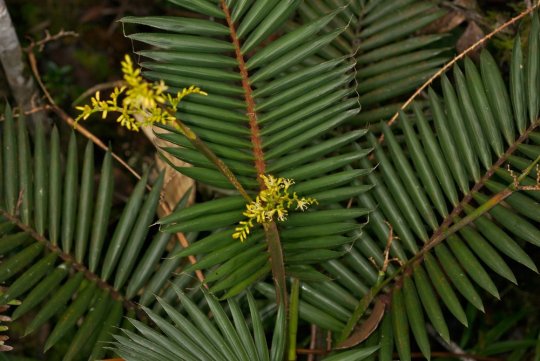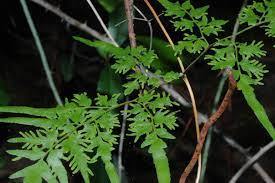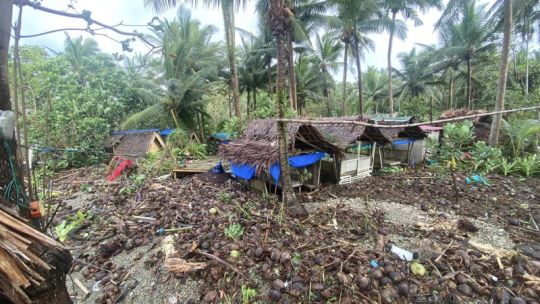#polillo islands
Text

Gray's Monitor Lizard (Varanus olivaceus), family Varanidae, endemic to southern Luzon, Catanduanes, and Polillo Islands, Philippines
One of only 3 species of frugivorous (fruit-eating) monitor lizards, a group which is usually carnivorous.
This species is not strictly frugivorous, as they also feed on small animals and eggs.
photograph by Helene Miller Hoffman
118 notes
·
View notes
Text

Phalaenopsis Hieroglyphic 🏵🏵☘
Is native to the Philippine islands of Polillo, It is found growing on and hanging down from trees in the coolest and deeply shady locations of humid forests at elevations below 1700 feet.
7 notes
·
View notes
Text
nakakaloka mga leni supporters na nagsasabi na "nanalo si leni sa polillo island karapat-dapat silang tulungan" . kahit 100% marcos pa yan nung eleksyon karapat-dapat pa rin na mabigyan silang tulong. akala ko pa naman angat buhay LAHAT
#nakakalokaaaaaaa. kung matamaan ang northern luzon bibigyan mo ba sila - kami - ng tulong?#o hindi dahil malakas si marcos dito?
15 notes
·
View notes
Text
INDIGENOUS MATERIALS USED
IN BASKETRY
Basketry served as a national icon for Filipinos signifying agricultural, creativity and cultural relevance. It has been a helpful industry in the country as this helps and benefits the economy, communities, people, as well the businesses. As part of it, Philippines has a lot of resources that makes the basketry industry as one of the largest contributors of the country's economy. The resources mentioned are the indigenous materials that are very helpful in making basket due to its features and characteristics. Some of the famous indigenous materials are Rattan and Nito.
RATTAN BASKETS

The rattan sector has significant economic and social importance in the Philippines. It contributes to employment and income generation of people who have few other livelihood options. It also forms part of the way of life of these people who, over the years, have developed social relationships linked to the rattan production-to-consumption system
What is Rattan?


Rattan is a naturally renewable palm that grows in the tropical regions of Africa, Asia and Australasia, and is used for furniture, handicrafts, and building material among others. Daemonorops is the second largest group of Philippine rattans. There are 14 species and one variety under this genus. Like Calamus, they are widely distributed but many are confined to islands and mountains. Korthalsia consists of only five species. Members of this genus have a more restricted distribution. Three species are only found in Palawan, two species in Mindanao and one species in Luzon, Polillo Island and in Mindanao. Plectocomia has the smallest number of members. It consists of two species. Members of this genus are confined to the primary rainforests of Palawan, Leyte and Mindanao.


Rattan- hundreds of uses have been developed to utilize the stem of the plant. Furniture, ornaments, keepsakes, and even weapons have been developed and their use is ever increasing. These tropical vines are easier to harvest than timber, easier to transport and grows faster than tress, thus making it a very attractive resource. It is a great alternative to wood furniture and for years it has been used to make the best furnishings in home or in the outdoors. Because of its flexibility to a certain extent, a lot of creativity can be exercised in the use of rattan in furniture making, particularly the rattan core. Almost all parts of the rattan can be used. The skin of rattan strands is peeled off the core and used for weaving. The remaining stems are then processed further, split into small diameters and become the basic material of rattan furniture.
NITO BASKETS

The use of nito vine for weaving traditional baskets, hats, trays and jars of different shapes has become an important source of livelihood in the areas of the country where the vine is found.

WHAT IS NITO?
The nito is a forest vine abundant in here in Philippines. Nito vine or lygodium circinatum is a plant belonging to the fern family that grows abundantly in many parts of the country. Clinging to trees and rocks, nito is a vine growing as a secondary forest cover mostly in low and medium altitudes. Nito is a popular raw material for baskets, placemats and plate chargers, coasters, and box containers.

NITO- is use to weave the traditional baskets, hats, trays and jars of different shapes and sizes. Their creations have also evolved to various modern home ornaments and fashionable accessories. A nito is transformed into items such as placemats, baskets and wine holders which is also handmade. The natural materials and techniques used to create each products is thrilling and challenging to see and watch as something as simple as a vine comes alive and is transformed into an item that will be cherish in home.
Each nito craft is a unique artwork delicately created by a single individual. They are a specialty item, having no single design that will ever be exactly the same. On average, a large basket takes one week to complete. It’s a process that requires much patience and skill but in the end, the final work speaks volumes of our rich indigenous tradition and excellent craftsmanship.
3 notes
·
View notes
Text
I. I am Joan! Let me show you who I am.
Henlo beautiful people!
Wanna know more about me?

Hi I am Joan Gloria Remoto, from the beautiful Island in Polillo, Quezon. 20 years old, an vediographer with full of creativity, performer and adventurer.

My Parents, Tatay Ed and Nanay Elma raised me. As far as I can remember I have had a happy childhood. I don’t have a dramatic or a traumatic experience as to how my parents raised me like most of the other kids. My parents handled my wrongdoings and mistakes very calmly, although I can’t remember doing something that’s very bad. I guess you could say that I’m spoiled but I don’t think I am.

On our family I am the third child. My oldest sister have her own life now because she is already married to her 10 years boyfie. My Ate April become my provider when I step to college. The second to oldest is my Ate Shara. She is my sister that very strick to me specially when there are someone who like me. And our baby bunso is Marian, she is very adorable. She is just like my twin, we are very close to each other.
Joan the explorer

My passion for travel came out of the blue during my teenage years. As a teen, I always looked at journeys simply as a way to relax and switch off.
Joan as a dancer

Dance is one of my favourite hobby and I enjoy dancing a lot. I started dancing when I was five years old and when I got older; my parents always push me to join dances at school even in our town to pursue this passion.
Joan's videography life
I’m a amature Digital Director and Photographer with over 3 years of pure passion for travel themed videos. I love traveling and I thought that I should start to get videos and picture in my every destinations.
0 notes
Photo

Have a Happy Weekend 🏝🌊 (at Costa Del Sol, Balesin Island, Polillo) https://www.instagram.com/p/Cn8FIEDSFAO/?igshid=NGJjMDIxMWI=
0 notes
Link
Check out this listing I just added to my Poshmark closet: POLILLO MOTHER OF PEARL COCKTAIL PURSE.
0 notes
Text
[ad_1]
CNN
—
Residents on the small resort island of Polillo are accustomed to extreme climate – their island sits within the northeastern Philippines, on the sting of the Pacific Ocean the place storms sometimes collect energy and switch into typhoons.
But even they had been surprised by the depth of Typhoon Noru, identified domestically as Typhoon Karding, that turned from a storm into an excellent storm in simply six hours earlier than hitting the area earlier this week.
“We’re used to typhoons because we’re located where storms usually land,” mentioned Armiel Azas Azul, 36, who owns the Sugod Beach and Food Park on the island, a bistro underneath palm bushes the place friends drink coconut juice in tiny thatched huts.
“But everything is very unpredictable,” he mentioned. “And (Noru) came very fast.”
The Philippines sees a median of 20 tropical storms every year, and whereas Noru didn’t inflict as a lot injury or lack of life as different typhoons in recent times, it stood out as a result of it gained energy so shortly.
Experts say quickly growing typhoons are set to grow to be rather more frequent because the local weather disaster fuels excessive climate occasions, and on the similar time it can grow to be tougher to foretell which storms will intensify and the place they are going to observe.
“The challenge is accurately forecasting the intensity and how fast the categories may change, for example from just a low-pressure area intensifying into a tropical cyclone,” mentioned Lourdes Tibig, a meteorologist and climatologist with the Institute for Climate and Sustainable Cities.
The same happened in the United States last week when Hurricane Ian turned from a Category 1 storm into a robust Category 4 hurricane earlier than making landfall alongside the southwestern coast of Florida on Wednesday.
Such fast intensification, because it’s identified in meteorological phrases, creates challenges for residents, authorities and native emergency employees, together with these within the Philippines, who more and more haven't any selection however to organize for the worst.
When Azul acquired warning that Typhoon Noru was approaching the Philippines final Saturday, he started his traditional preparations of organising his generator and tying down unfastened objects.
At that stage, Noru was predicted to make landfall on Sunday because the equal of a Category 1 hurricane.
But because the storm grew nearer, it strengthened into an excellent storm, the equal of a Category 5 hurricane, making landfall Sunday night with ferocious winds that lifted waves and lashed properties on the shoreline.
Azul mentioned his group was lucky to have TV sign within the resort, and as quickly as they came upon that the storm was a lot stronger than forecast, his employees introduced in all of the bistro’s out of doors furnishings and tied down the roofs of their guesthouses, whereas native authorities items evacuated individuals residing close to the shore.
“But other parts of the island which don’t have internet connectivity and only rely on radio signals might not have got the message in time,” he mentioned.
The storm broken the resort city, as sturdy winds toppled seaside huts and broken close by fishing cages.
Azul added that coconut bushes planted throughout the island a few decade in the past after Typhoon Ketsana (Ondoy) battered the world had simply began to bear fruit however had been now utterly worn out.
“We have to pick up the pieces, and rebuild again,” he mentioned.
On the principle
island of Luzon, Noru left a path of destruction within the province of Nueva Ecija, generally known as the “rice granary” of the nation.
Ruel Ladrido, 46, a farmer proprietor in Laur, Nueva Ecija, mentioned his rice fields weren't flooded however sturdy winds broken his crops.
“It didn’t rain hard near me, but the winds uprooted some of my fields. It will affect our harvest this season, but what can we do? I don’t know the extent of the damage yet, but we’ll have to plant again,” he informed CNN on Tuesday.
As of Friday, 12 individuals had died within the aftermath of Noru, together with 5 rescue employees in Bulacan province, based on the National Disaster Risk Reduction and Management Council (NDRRMC).
The estimated injury to agriculture ballooned to some 3 billion Philippine pesos (about $51 million), affected 104,500 farmers and fisher folks, and broken over 166,630 thousand hectares of crop land, based on the NDRRMC.
The Philippines, an archipelago of greater than 7,600 islands, is already susceptible to typhoons, however as sea ranges rise and ocean temperatures heat, the storms anticipated to grow to be extra highly effective, based on research printed in 2018.
The research discovered that the stronger typhoons carry extra moisture and observe in a different way. They are additionally “aggravated by sea level rise, one of the most certain consequences of climate change.”
A separate research printed final 12 months, by researchers on the Shenzhen Institute of Meteorological Innovation and the Chinese University of Hong Kong, discovered that typhoons in east and southeast Asia now final between two and 9 hours longer and journey a median of 100 kilometers (62 miles) additional inland than they did 4 a long time in the past. By the top of the century, they might have double the damaging energy.
As such, it’ll grow to be harder to forecast their observe and predict ones that can shortly achieve energy, or bear fast intensification – outlined as when wind speeds improve by not less than 35 miles per hour (56 kilometers per hour) in 24 hours or much less.
Although uncommon, the Philippines is not any stranger to this phenomenon as 28% of all tropical cyclones that made landfall within the nation relationship again to 1951 underwent fast intensification based mostly on official information, based on Gerry Bagtasa, a professor with the University of the Philippines’ Institute of Environmental Science and Meteorology.
Bagtasa mentioned components reminiscent of excessive moisture, heat ocean floor temperatures and low wind shear decide the size of fast intensification, however these climate readings “don’t have to be extraordinary in their values” to create fast intensification.
He remarked that Typhoon Noru’s observe throughout the Philippine Sea earlier than making landfall was “just average for this season” and the wind shear – or the change of wind velocity and energy with peak within the environment – was not terribly low.
Bagtasa additionally mentioned forecasters discover it tough to foretell fast intensification within the Pacific, as a result of regardless that satellite tv for pc monitoring has improved, there isn’t sufficient information to forecast worsening climate occasions.
“There are also many unprecedented events happening recently worldwide, and since forecasters typically rely on their past experiences, new events can ‘throw off’ forecasts, so to speak,” he mentioned.
Mirian Abadilla, a health care provider and municipal well being officer in Cabangan, Zambales province, on the Philippine island of Luzon, has been concerned in her group’s catastrophe administration response since 1991.
She says in that point, typhoons have grow to be tougher to forecast, and her group has no selection however to organize for the worst.
“The typhoons are definitely getting stronger because of climate change, and getting harder to predict,” she mentioned. “But each time we get hit with a typhoon, we try to keep improving our disaster response – that’s the only way for us to stay alert.”
She mentioned native governments held conferences as Typhoon Noru approached the coast to go over reduction and rescue plans.
“Filipinos are getting better at disaster preparedness … because we have to be,” she mentioned.
Every province, metropolis, municipality and barangay within the Philippines is required to comply with nationwide catastrophe danger discount and administration system underneath an act imposed in 2010 to handle the island nation’s local weather vulnerability.
Local governments should conduct preemptive evacuation based mostly on the projected warnings from the nationwide climate division, and it’s really useful they maintain common catastrophe rescue drills with responders and host briefing seminars for communities.
In a press briefing on Monday, Philippine President Ferdinand “Bongbong” Marcos Jr. praised native authorities items for “doing a good job” in explaining the scenario to the native inhabitants as Noru approached, and for finishing up evacuations which will have prevented mass casualties.
But he additionally appeared to acknowledge the unpredictability of the storms that recurrently threaten the Philippine coast, and the necessity to at all times be ready.
“I think we may have gotten lucky at least this time, a little bit,” Marcos Jr. mentioned.
[ad_2]
Source link
0 notes
Text
Noru became a super typhoon in 6 hours. Scientists say powerful storms are becoming harder to forecast
Noru became a super typhoon in 6 hours. Scientists say powerful storms are becoming harder to forecast
CNN
—
Residents on the small resort island of Polillo are accustomed to severe weather – their island sits in the northeastern Philippines, on the edge of the Pacific Ocean where storms typically gather strength and turn into typhoons.
But even they were stunned by the intensity of Typhoon Noru, known locally as Typhoon Karding, that turned from a typhoon into a super typhoon in just six…

View On WordPress
0 notes
Text

Gray's Monitor Lizard (Varanus olivaceus), family Varanidae, endemic to southern Luzon, Catanduanes, and Polillo Islands, Philippines
One of only 3 species of frugivorous (fruit-eating) monitor lizards, a group which is usually carnivorous.
This species is not strictly frugivorous, as they also feed on small animals and eggs.
photograph by Los Angeles Zoo
114 notes
·
View notes
Link
[September 25]
Noru made landfall in the Philippines in the evening on September 25 as the equivalent of a category 4 storm. It first hit the Polillo Islands before making a second landfall about 55 kilometers (35 miles) northeast of Manila on the populous island of Luzon. According to news reports, the storm led to at least six deaths, knocked out power to two provinces, and forced tens of thousands of people to evacuate their homes.
0 notes
Photo

Noru Strikes the Philippines The technical definition of “rapid intensification” of a tropical cyclone is a storm with winds that increase by at least 55 kilometers (35 miles) per hour in a 24-hour period. In the Western Pacific, Super Typhoon Noru (locally called Karding) blew past that threshold. The storm’s winds accelerated from 80 kilometers (50 miles) per hour on September 24 to 250 kilometers (155 miles) per hour the next day. Meteorologists have only recorded a handful of storms that have ever intensified so much so quickly. Noru made landfall in the Philippines in the evening on September 25 as the equivalent of a category 4 storm. It first hit the Polillo Islands before making a second landfall about 55 kilometers (35 miles) northeast of Manila on the populous island of Luzon. According to news reports, the storm led to at least six deaths, knocked out power to two provinces, and forced tens of thousands of people to evacuate their homes. The Visible Infrared Imaging Radiometer Suite (VIIRS) on Suomi NPP acquired this image of Noru on September 25, 2022, a few hours after landfall. Clouds are shown in infrared brightness temperature data, which is useful for distinguishing cooler cloud structures (purple) from warmer surfaces below (yellow). The coolest temperatures (white) are generally associated with the tallest clouds. Noru weakened as it passed over the mountainous terrain of Luzon, but forecasters expected it to strengthen again to the equivalent of a category 3 storm as it passed over warm waters in the South China Sea. The typhoon could make landfall on September 27 or 28 in central Vietnam. Hundreds of thousands of people in Vietnam were preparing to evacuate in advance of the storm. NASA Earth Observatory image by Lauren Dauphin, using VIIRS data from NASA EOSDIS LANCE, GIBS/Worldview, and the Suomi National Polar-orbiting Partnership. Story by Adam Voiland.
1 note
·
View note
Photo

Good Morning 🌊🏝🕶 (at Costa Del Sol, Balesin Island, Polillo) https://www.instagram.com/p/Cm-cVISyo89/?igshid=NGJjMDIxMWI=
0 notes
Text
Tremendous Storm Noru Leaves 5 Useless within the Philippines
MANILA, Philippines — Storm Noru blew out of the northern Philippines on Monday, leaving 5 rescuers lifeless, inflicting floods and energy outages and forcing officers to droop courses and authorities work within the capital and outlying provinces.
Essentially the most highly effective storm to hit the nation this yr slammed into the coast in Burdeos city in Quezon province earlier than dusk on Sunday then weakened because it barreled in a single day throughout the principle Luzon area, the place hundreds of individuals had been moved to emergency shelters, some forcibly, officers mentioned.
Learn extra: The Philippines Is the Most Storm-Uncovered Nation on Earth
Gov. Daniel Fernando of Bulacan province, north of Manila, mentioned 5 rescuers, who had been utilizing a ship to assist residents trapped in floodwaters, had been hit by a collapsed wall then apparently drowned within the rampaging waters.
“They had been residing heroes who had been serving to save the lives of our countrymen amid this calamity,” Fernando informed DZMM radio community. “That is actually very unhappy.”
On Polillo island in northeastern Quezon province, a person was injured after falling off the roof of his home, officers mentioned.
A resident swims alongside sturdy waves as Storm Noru approaches the seaside slum district of Tondo in Manila, Philippines, Sunday, Sept. 25, 2022.
Aaron Favila—AP
Greater than 17,000 individuals had been moved to emergency shelters from high-risk communities liable to tidal surges, flooding and landslides in Quezon alone, officers mentioned.
Greater than 3,000 individuals had been evacuated to security in Metropolitan Manila, which was lashed by fierce wind and rain in a single day. Lessons and authorities work had been suspended Monday within the capital and outlying provinces as a precaution though the morning skies had been sunny.
Learn extra: The Future Is Being Rewritten by Historic Inexperienced Funding—And Rising Local weather Devastation
All the northern provinces of Aurora and Nueva Ecija, which had been hit by the storm, remained with out energy Monday and restore crews had been at work to convey again electrical energy, Vitality Secretary Raphael Lotilla informed President Ferdinand Marcos Jr. in a televised assembly he known as to evaluate damages and coordinate disaster-response.
Marcos Jr. praised officers for evacuating hundreds of individuals to security as a precaution earlier than the storm hit which prevented massive variety of casualties regardless of the Noru’s doubtlessly disastrous pressure.
Noru underwent an “explosive intensification” over the open Pacific Ocean earlier than it hit the Philippines, Vicente Malano, who heads the nation’s climate company, informed The Related Press on Sunday.
Learn extra: The Local weather Disaster Is International, however These 6 Locations Face the Most Extreme Penalties
From sustained winds of 85 kilometers per hour (53 mph) on Saturday, Noru was an excellent storm simply 24 hours later with sustained winds of 195 kilometers (121 miles per hour) and gusts of as much as 240 kph (149 mph) at its peak late Sunday.
By Monday morning, Noru had sustained winds of 140 kph (87 mph) and gusts of 170 kph (105 mph) and was transferring westward within the South China Sea at 30 kph (19 mph), in keeping with the climate company.
About 20 storms and typhoons batter the Philippines annually. The archipelago additionally lies within the “Pacific Ring of Fireplace,” a area alongside a lot of the Pacific Ocean rim the place many volcanic eruptions and earthquakes happen, making the Southeast Asian nation one of many world’s most disaster-prone.
In 2013, Storm Haiyan, one of many strongest recorded tropical cyclones on the earth, left greater than 7,300 individuals lifeless or lacking, flattened total villages, swept ships inland and displaced greater than 5 million within the central Philippines — properly to the south of Noru’s path.
Extra Should-Learn Tales From TIME
Contact us at [email protected].
Originally published at San Jose News HQ
0 notes
Video
youtube
Welcome to the news channel of the Angry Nature,Today we will tell you about Typhoon Noru, Philippine,, Typhoon Noru blasted the Philippines main Luzon island on Sunday, prompting warnings that heavy winds and torrential rain could cause catastrophic flooding. The eyewall of the storm, known locally as Typhoon Karding, made landfall in the Polillo Islands at 5 p.m. local (5 a.m. ET) as a super typhoon and shortly afterwards hit the municipality of Burdeos, in Quezon Province, according to the Philippine Atmospheric, Geophysical and Astronomical Services Administration (PAGASA). The storm had sustained winds of 240 kph (149 mph), with gusts up to 295 kph (183 mph) at that time, according to the Joint Typhoon Warning Center. It has since weakened slightly to a category 4 typhoon, the Joint Typhoon Warning Center said in an update at around 9 a.m. ET., but is still "causing an extremely dangerous winds, storm surge, extreme rainfall and catastrophic flooding" in central Luzon. PAGASA reports that the typhoon is forecast to track westward in the next 6 to 12 hours, then west-northwestward for the rest of the day. There is a high to very high risk of storm surge more than 3 meters in height in the low-lying and exposed coastal areas of northern Quezon Province. Heavy rainfall is also forecast along the typhoon's path in the coming hours. "Under these conditions, widespread flooding and rain-induced landslides are expected, especially in areas that are highly or very highly susceptible," PAGASA said. Authorities previously issued an extreme emergency alert as the storm reached super typhoon status early on Sunday morning local time, after suddenly intensifying. "The highest emergency preparedness and response protocol has been activated in Metro Manila, Central Luzon, Calabarzon, Mimaropa, and the Bicol region," said the National Disaster Risk Reduction and Management Council. It urged the public to take care, adding strong winds were expected to hit within the next 18 hours. Schools in multiple cities including Muntinlupa City and Aurora suspended classes for Monday, September 26, due to the approaching storm. PAGASA issued a signal warning level four for the Polillo Islands in anticipation of extensive damage that could be caused by the storm. The warning came after the storm rapidly intensified in the early hours of Sunday. The Joint Typhoon Warning Center said it had strengthened from a 140 kph (85 mph) typhoon to a 250 kph (155 mph) super typhoon in just six hours. PAGASA also issued level two and three warnings for much of Luzon, including metro Manila. hurricane_noru #storm_noru #angry_nature #typhoon_noru #philippine_typhoon ________________________________ The channel lists such natural disasters as: 1) Geological emergencies: #earthquake #volcanic_eruption mudflow, #landslide landfall, avalanche; 2) Hydrological emergencies: #flash_flood #tsunami Limnological catastrophe, floods, flooding; 3) Fires: Forest fire, Peat fire, Glass Fire, Wildfire; 4) Meteorological emergencies: #tornado, #cyclone #blizzard Hail, Drought, Hail, #hurricane #storm, Thunderstorm, typhoon Tempest, Lightning. ATTENTION: All videos are taken from open sources. The selection is based on publication date, title, description, and venue. Sometimes, due to unfair posting of news on social networks, the video may contain frames that do not correspond to the date and place. It is not always possible to check all videos. We apologize for any errors! Thank you for watching, don't forget to subscribe our channel, We Wish you good Weather,
0 notes